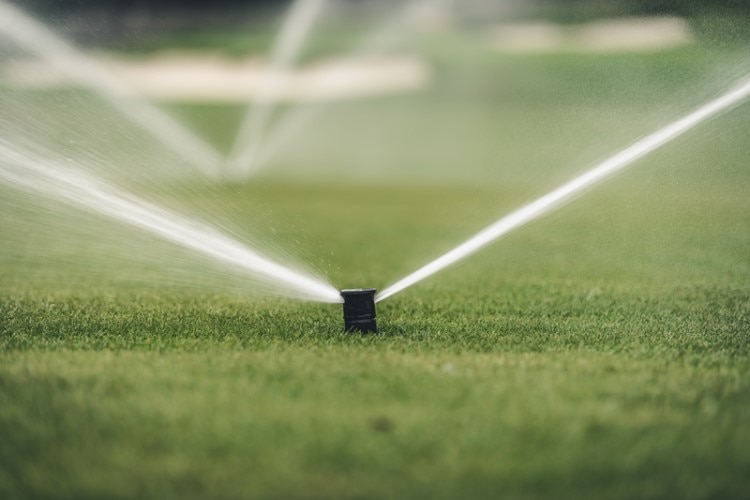
A medida que baja la temperatura y se acerca el invierno, es crucial preparar los sistemas de riego de tu campo de golf. Una preparación adecuada para el invierno evita daños por temperaturas bajo cero y, al mismo tiempo, mantiene la longevidad del sistema. Esto garantiza una transición sin problemas para volver a operar en primavera. El agua que queda en las tuberías puede congelarse, lo que hace que estas se expandan y provoquen daños graves. Las tuberías agrietadas, los aspersores rotos y las válvulas defectuosas pueden generar reparaciones costosas y retrasar el negocio en primavera. La preparación para el invierno protege contra estos problemas y garantiza que tus sistemas de riego estén listos para la primavera.
Preparación ante el invierno
El mejor momento para comenzar a preparar para el invierno es en otoño, idealmente antes de que la temperatura baje a cero grados. Revisa y controla el pronóstico meteorológico y los patrones climáticos para determinar el mejor momento para comenzar. Inspecciona tus sistemas y realiza las reparaciones necesarias antes de prepararlos para el invierno. Reúne el equipo necesario para completar el proceso. Para los sistemas de riego de campos de golf, se recomienda un compresor de aire con al menos 600-1200 pies cúbicos por minuto. Además, asegúrate de tener acceso al aislamiento de antemano para garantizar que puedas completar el trabajo. Las mantas antirreflujo también se pueden utilizar para aislar y proteger aún más los sistemas de riego.
Pasos para una preparación invernal eficaz
Después de recoger tu equipo, puedes comenzar el proceso de preparación invernal. Apaga y prepara tu estación de bombeo para el invierno. Después de esto, drena toda el agua de las líneas principales utilizando válvulas de drenaje manuales o automáticas.
El siguiente paso es vaciar el sistema utilizando aire comprimido para expulsar el agua restante. Verifica que todas las demás válvulas de drenaje estén cerradas, excepto la válvula donde se conectará la manguera de aire. Después de conectar la manguera, deja que el compresor de aire se cargue. Al purgar el sistema de riego, se recomienda que no utilice más de 50 psi. Si se purga un sistema con demasiada presión, podría causar daños. Es buena idea comenzar en la estación con la elevación más alta y avanzar hacia abajo. Te darás cuenta de que tu estación está completa cuando los cabezales de los aspersores dejen de liberar agua; sin embargo, es mejor ejecutar dos ciclos cortos en lugar de uno largo. Esto no solo reduce el riesgo de daños al sistema, sino que también te permite volver a verificar y asegurarse de que no te falte ninguna estación.
Conviene aislar los componentes que se encuentran sobre el suelo, como los dispositivos antirreflujo y las válvulas, para protegerlos. Esta capa protectora adicional puede evitar daños por congelamiento.
Abre todos los desagües y déjalos abiertos en un ángulo de 45 grados. Esto evitará daños por condensación. Por último, asegúrate de que la estación de bombeo esté calentada o que esté completamente drenada de agua y cerrada correctamente durante los meses fríos del invierno.
Los campos de golf tienen necesidades específicas debido a sus extensas áreas de césped, características especiales y cantidad de aspersores. Asegurarse de que tus empleados estén debidamente capacitados y de que tengas el equipo adecuado es esencial para cuidar estos sistemas. Es importante mantener un registro del proceso y las fechas de las reparaciones, para futuras referencias para solucionar problemas. Si eres proactivo, lograrás mantener el campo en condiciones óptimas para jugar.
Lista de verificación posterior al acondicionamiento para el invierno
Si ya completaste el proceso de acondicionamiento para el invierno, vuelve a verificar y asegúrate de que no queden componentes expuestos. A medida que la temperatura sube, retira cualquier aislamiento o cubierta protectora e inspecciona para ver si hay señales de daños que puedan haberse producido durante el invierno. Al recargar por primera vez el sistema de riego, abre varios puntos de descarga y vuelve a presurizar lentamente para evacuar el aire atrapado. Una vez que hayas vuelto a presurizar, prueba todos los componentes para comprobar que funcionan correctamente y realiza las reparaciones o ajustes necesarios. Asegúrate de probar cada estación de riego para revisar de que funcionan correctamente y ajustar los cabezales y las válvulas de los aspersores. Es crucial ser minucioso durante este proceso para evitar daños costosos y dar la bienvenida a los golfistas con un campo impecable.
Haz crecer tu negocio con SiteOne
Los asociados de tu sucursal más cercana están disponibles para responder a todas tus preguntas. Compra en línea o en la aplicación SiteOne. Para obtener información sobre la gestión y manejo de campos de golf, visítanos aquí.


